PARISH HISTORY
"Italians moving into East Liverpool's east end, after the turn of the century, decided not to affiliate with St. Aloysius Parish, in the downtown district. In July of 1914, they began holding services, in a vacant store room, while planning to construct a new church on Pennsylvania Ave. The new church St. Ann was opened on December 25,1915."(excerpt from The City of Hills and Kilns)
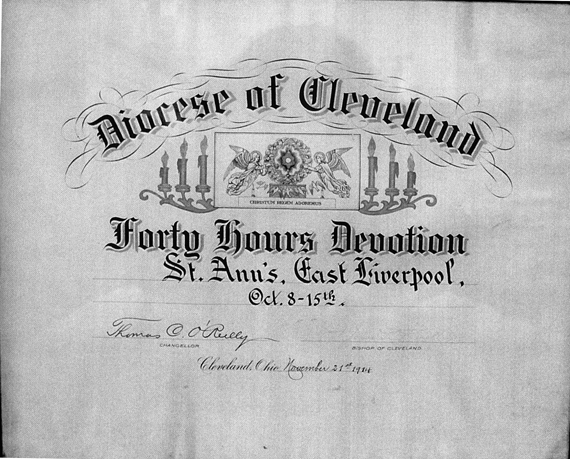
Diocese of Cleveland 40 Hour Devotion, 1914. St. Ann Church ELO, Memorial Book 1915-2011.
The original building known as St. Ann Church was designed and constructed by J. J. Weisand, a parishioner, under the authority of Bishop John P. Farrelly of the Diocese of Cleveland.
Cornerstone Laying 1915
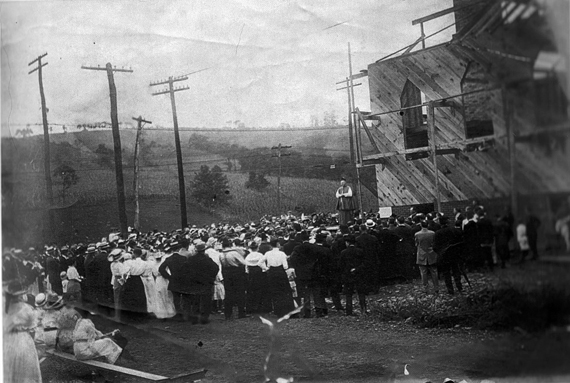
St. Ann Church ELO, Memorial Book 1915-2011.
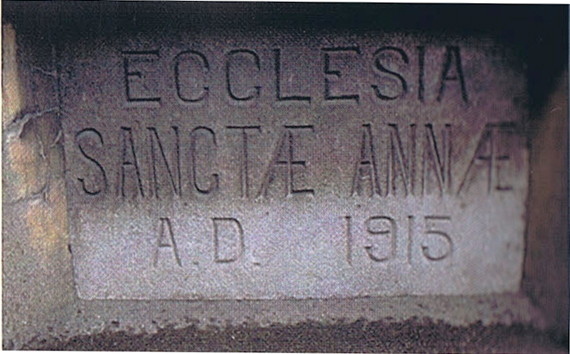
St. Ann Church ELO, Memorial Book 1915-2011.
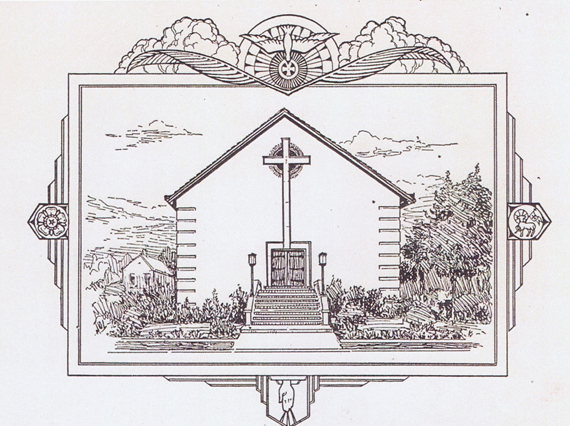
St. Ann Church - East Liverpool 1915. St. Ann Church ELO, Memorial Book 1915-2011.
The first Mass was celebrated at midnight, Christmas Eve, 1915, by Reverend Jerome J. Reidy. At the time, St. Ann's was considered a mission, the mother parish being St. Aloysius.
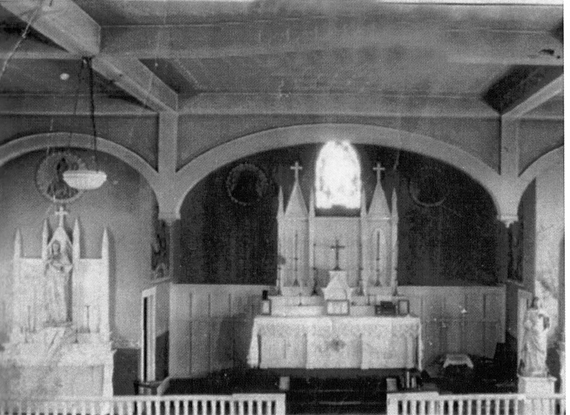
Original Altar 1915. St. Ann Church ELO, Memorial Book 1915-2011.
In 1918, Bishop Farrelly named Father Reidy, pastor, at St. Ann. The following year, Father Reidy was transferred to Conneaut, and the parish again became a mission.
In 1923, Reverend Stanislaus Cappe was appointed pastor at St. Ann, which again became a parish. Father Cappe was succeeded by Reverend John L. Maurer in 1926. Under Father Maurer, the present rectory was built in 1929.
When Reverend Joseph P. Walsh, Father Maurer's successor, was assigned to another parish in 1937, St. Ann, once again, became a mission served by St. Aloysius.
In May 1943, the Diocese of Youngstown was established. It, of course, included the Mission of St. Ann. Four years later, the mission again became a parish - under Pastor John C. Rath.
The building underwent major renovation in 1949 under Father Rath and interior remodeling of the basement social room in 1954 under the Reverend Francis N. Thome. Additional improvements to the building included an extension to the sacristy and air-conditioning which were added in 1972-73 under Reverend Robert E. Sfara.
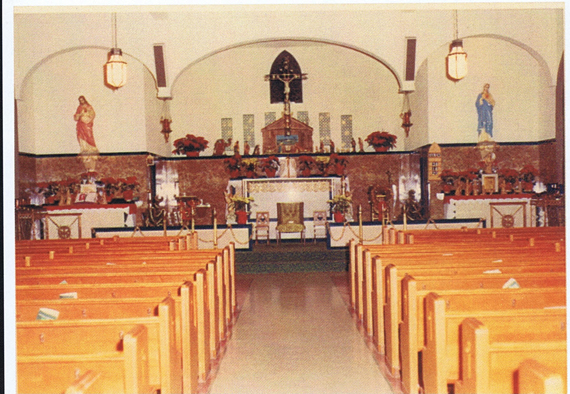
Remodeled Under Father Sfara 1968-1974. St. Ann Church ELO, Memorial Book 1915-2011.
During the pastorate of Reverend Joseph A. Tamburrini, several men from the parish remodeled the social hail again (1978 - bringing it to its present state.
In 1982, Reverend Robert G. Gibas, with the assistance of the Diocesan architect, Leonard Friedman, led the reconstruction of the interior of the church to reflect the liturgical changes resulting from Vatican II. Hard-working parishioners and the Corolla Construction Company completed the improvements.
On January 18, 2012 most of the usual group of ELHS photographers went to St. Ann Catholic Church in East End to photograph the exterior and interior of that church.
What follows are the fruit of those efforts.
Yes, the church has been closed and the building is for sale.
The ceiling is quite beautiful.
Looking towards the front.
The front altar area.
Looking towards the back. Notice that small framed window.
This is a close up of that same framed window.
This site is the property of the East Liverpool Historical Society.
Regular linking, i.e. providing the URL of the East Liverpool Historical Society web site for viewers to click on and be taken to the East Liverpool Historical Society entry portal or to any specific article on the web site is legally permitted.
Hyperlinking, or as it is also called framing, without permission is not permitted.
Legally speaking framing is still in a murky area of the law
though there have been court cases in which framing has been seen as violation of copyright law. Many cases that were taken to court ended up settling out-of-court with the one doing the framing agreeing to cease framing and to just use a regular link to the other site.
The East Liverpool Historical Society pays fees to keep their site online. A person framing the Society site is effectively presenting the entire East Liverpool Historical Society web site as his own site and doing it at no cost to himself, i.e. stealing the site.
The East Liverpool Historical Society reserves the right to charge such an individual a fee for the use of the Society’s material.